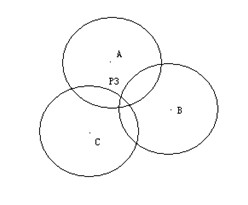Method for repairing cavities of monitoring area with mobile nodes
A technology for monitoring areas and mobile nodes, applied in electrical components, wireless communication, network topology, etc., can solve problems such as inability to obtain optimal solutions, expensive sensor nodes, and difficulty in finding accurate solutions
- Summary
- Abstract
- Description
- Claims
- Application Information
AI Technical Summary
Problems solved by technology
Method used
Image
Examples
Embodiment 1
[0053] The method is distributed and it is divided into two parts, hole detection and hole repair. When a node is checked as fully covered by hole detection, it will not execute subsequent parts, otherwise the hole repair process is performed.
[0054] First, some assumptions and terms mentioned in the method of this embodiment:
[0055] Assuming that each node has a unique identification number, the node can perceive a certain area and communicate with adjacent nodes. Its sensing and communication range is assumed to be a circle with a fixed radius, respectively SR and TR, and TR≥2SR. In addition, there is no precise geographical information, but the nodes in the border area can correctly identify themselves, and the border of the monitoring area will not be misjudged as a hollow area.
[0056] The present invention has no specific requirements on whether the cavity is closed. At the same time, it is assumed that each node has a certain mobility. Through the limited movemen...
PUM
 Login to View More
Login to View More Abstract
Description
Claims
Application Information
 Login to View More
Login to View More - R&D
- Intellectual Property
- Life Sciences
- Materials
- Tech Scout
- Unparalleled Data Quality
- Higher Quality Content
- 60% Fewer Hallucinations
Browse by: Latest US Patents, China's latest patents, Technical Efficacy Thesaurus, Application Domain, Technology Topic, Popular Technical Reports.
© 2025 PatSnap. All rights reserved.Legal|Privacy policy|Modern Slavery Act Transparency Statement|Sitemap|About US| Contact US: help@patsnap.com



